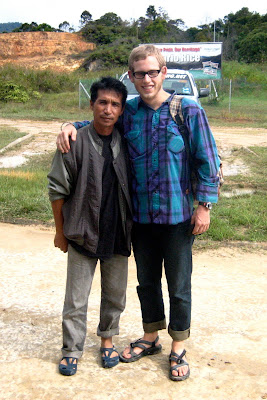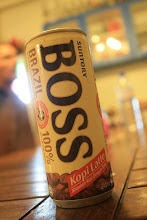I resurfaced from the jungle to Kota Kinabalu before a two day hike up and down Mt. Kinabalu. The climb/hike consists of a slog

Almost close enough to touch.
most of the way up the mountain on the first day. At 3272m I stayed at Laban Rata, a full service resort so to speak. Throughout the course of the over night stay, we were served 3 meals: dinner, 2AM 'supper', and breakfast. All of which, including everything at the lodge short of the structure, has been hiked up by porters for a rate per Kg. These guys are crazy. On the balcony of the lodge, I witnessed one of the most beautiful sunsets of my life at the eye level of the clouds.

Sunrise from 4095m.
To reach the top by sunrise, we had to wake up, have 'supper', and be hiking by 3AM. The final climb to the top is not all that difficult, though the altitude is very obvious. The object is to reach the top right at sunrise so you don't have to sit up there and wait in the cold. We had a very steady ascent and timed it just right so that we made it virtually sweat-less. By the time I started feeling cold, the sun's warmth was coming over the ridge. If you look closely at the picture, you can see little specks on bright ridge line. Those are people.

Sunset at eye level.
I hadn't realized it at the time, partially because the day had been so long, but I saw the sun rise from the top of a mountain, and set into the South China Sea all in the same day. It actually took me until recently when I found the pictures in the same dated folder that this was the case. Vacation...It makes you forget some times. This sunset was enjoyed from the shore in Kota Kinabalu.
To top off my adventurous two weeks, I spent two days on the islands off the coast of Kota Kinabalu with some friends. It really takes a pair of swim trunks to find out how powerful the sun is near the equator. Back home, everyone sits in the sun for as long as possible, not very long. Here it seemed no one wanted full sun exposure for most of the day. The backs of my thighs learned why the hard way.
























